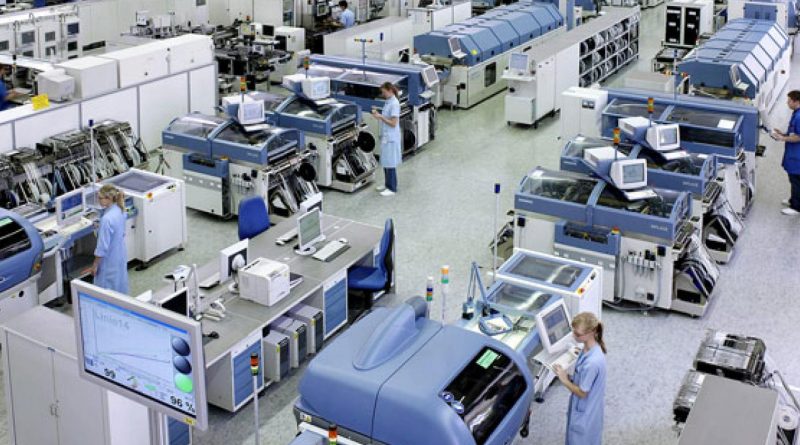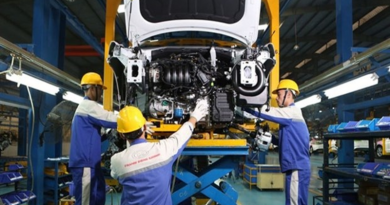How a smart factory actually works
How a smart factory actually works – At a manufacturing plant in Germany, machines produce millions of Programmable Logic Controls (PLCs) that automate machinery – from ships, automobiles, and farm equipment to entire production centers around the world. The output of customized products manufactured at the plant is 99.99885% defect-free.
In the example of the “smart factory” ecosystem described above, the physical infrastructure is powered by information and communications technologies, which draw insights from the data in the landscape.
Automation is powered by insights, which enable the executing of business processes and deliver programmed output with minimal human intervention. Such a cyber-physical environment, founded on the Industrial Internet of Things (IIoT), is the very basis of the Fourth Industrial Revolution that is bringing “intelligence” to manufacturing.
Lean production
Industry 4.0 transforms how factories operate by creating a conducive environment for Just-In-Time (JIT) practices for production, order management, and shipment. It not only interconnects disparate sub-systems of a shop floor, but also establishes digital links between the assembly line or processing unit, and the product design office, logistics services, supply chain, and stakeholders.
A connected plant manufactures high-quality products in shorter production cycles and addresses customer demand for product variety, as well as minimizing waste across operations. The interplay of sensors, data, and analytics is the catalyst for this revolution.

Sensors
Connected factories track the location of labour, materials, machines, and moveable assets in real-time. IIoT digitizes the production environment by integrating the Manufacturing Execution System and Enterprise Resource Planning system with embedded devices and process instruments for real-time communication.
Self-driving vehicles, geofencing systems for transportation and materials handling, hazard monitoring solutions for industrial safety and security, and remote quality control tools to manage air, water, and product quality depend on sensors and communication technology to function optimally. The network of connected components, sensors, and controllers provide large volumes of useful data in a variety of forms and formats.
Data
Seamless data flow between machines and enterprise systems unify the entire manufacturing process. Big data tools consume data residing anywhere – sometimes even in the environment outside the manufacturing facility – and in structured, unstructured, and semi-structured formats, to provide visibility into the production environment, facilitating the enhancement of dynamic manufacturing operations. Smart equipment and Industry 4.0 technology empower manufacturers to defy economies of scale and assemble customized products or handle small-sized production runs, profitably.
Flexible operations and real-time data from human, system-to-system and human communication protocols improve quality and reliability through timely interventions before and during manufacturing.
IIoT leverages data to drive self-organizing production lines. In the case of the autonomous bin, when sensors trigger a replenishment request, data in the order management system responds to the requirement. Synchronization of production schedules and supply chain activities based on real-time data from IoT devices enable just-in-time arrival of materials in the bin.
Cloud computing enables smart factories to generate, process, and store large data sets cost-effectively. However, raw data offers limited benefits. Sophisticated analytical models are needed to monetize big data and predict requirements.
Analytics
The value of IIoT transcends automated measuring, sensing, and control of operations. Advanced analytical tools and cognitive models intelligently apply big data to create a responsive and self-healing environment for the factory of tomorrow. Predictive analytical tools harness intelligence from the customer, supplier, equipment, and production data, which can then be acted upon.
Predictive analytics minimizes downtime for retooling equipment and asset maintenance, helping OEMs grow revenue from after-sales services by accurately forecasting the lifespan and maintenance requirements of finished products.
Automated maintenance, ordering, receiving, assembly, shipping, and after-sales services ensure agility, while analytics drives self-optimization. Going back to the example of the autonomous bin, while sensor information and automated order data management enable JIT inventory strategy, analytical frameworks can identify areas for further efficiency and cost reduction – through rearrangement of the sequence in the production line, re-configuring the product that uses the part, or replacement with a more economical component.
Industry 4.0 helps the manufacturing ecosystem to autonomously sense the context, adapt to constraints, and react/organize preemptive action to achieve business goals. The industrial application of the Internet of Things (IoT) and data analytics will lead to fact-based decision-making that will, in turn, be executed as a matter of routine by automatons.
Source: weforum.org









